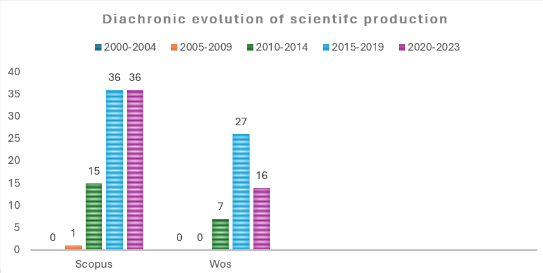Acceptance of ChatGPT in social work students
Abstract
Recent advancements in natural language processing (NLP) and large language models (LLM) such as ChatGPT, have generated high expectations and concerns regarding the future impact of AI on education and learning. In light of this, our goal was to investigate the usage of ChatGPT among social work students and to identify factors that predict its adoption according to the Technology Acceptance Model (TAM). To achieve this, we conducted an online study with a large sample of social work students (N = 875). The results revealed that ChatGPT has been widely adopted, with 80% of social work students reporting its use for study-related tasks. However, the frequency of use was moderate. Thus, although students experiment with ChatGPT, they do not use it very frequently for their studies. Its primary applications include clarifying questions, explaining concepts, analysing, editing, and writing texts, as well as conducting literature reviews. The frequency of ChatGPT use was primarily predicted by its perceived usefulness, followed by perceived ease of use. Interestingly, affinity for technological interaction did not emerge as a significant predictor. This suggests that even students who are typically less interested in technology are utilizing ChatGPT for their studies due to its perceived usefulness. Overall, these findings highlight the widespread adoption of ChatGPT among social work students and emphasize the importance of perceived usefulness in driving its usage.
References
[1]Ahmad SF, Rahmat MohdK, Mubarik MS, et al. Artificial Intelligence and Its Role in Education. Sustainability. 2021; 13(22): 12902. doi: 10.3390/su132212902
[2]Holmes W, Tuomi I. State of the art and practice in AI in education. European Journal of Education. 2022; 57(4): 542–570. doi: 10.1111/ejed.12533
[3]Rahman M, Watanobe Y. ChatGPT for Education and Research: Opportunities, Threats, and Strategies. Applied Sciences. 2023; 13(9): 5783. doi: 10.3390/app13095783
[4]Zawacki-Richter O, Marín VI, Bond M, et al. Systematic review of research on artificial intelligence applications in higher education – where are the educators? International Journal of Educational Technology in Higher Education. 2019; 16(1). doi: 10.1186/s41239-019-0171-0
[5]Pradana M, Elisa HP, Syarifuddin S. Discussing ChatGPT in education: A literature review and bibliometric analysis. Cogent Education. 2023; 10(2). doi: 10.1080/2331186x.2023.2243134
[6]Grassini S. Shaping the Future of Education: Exploring the Potential and Consequences of AI and ChatGPT in Educational Settings. Education Sciences. 2023; 13(7): 692. doi: 10.3390/educsci13070692
[7]Mosaiyebzadeh F, Pouriyeh S, Parizi R, et al. Exploring the Role of ChatGPT in Education: Applications and Challenges. In: Proceedings of SIGITE ‘23: The 24th Annual Conference on Information Technology Education; 11–14 October 2023; Marietta, GA, USA. pp. 84–89.
[8]Shahzad MF, Xu S, Javed I. ChatGPT awareness, acceptance, and adoption in higher education: the role of trust as a cornerstone. International Journal of Educational Technology in Higher Education. 2024; 21(1): 46. doi: 10.1186/s41239-024-00478-x
[9]García-Alonso EM, León-Mejía AC, Sánchez-Cabrero R, et al. Training and Technology Acceptance of ChatGPT in University Students of Social Sciences: A Netcoincidental Analysis. Behavioral Sciences. 2024; 14(7): 612. doi: 10.3390/bs14070612
[10]von Garrel J, Mayer J. Artificial Intelligence in studies—use of ChatGPT and AI-based tools among students in Germany. Humanities and Social Sciences Communications. 2023; 10(1): 799. doi: 10.1057/s41599-023-02304-7
[11]Davis FD. Perceived Usefulness, Perceived Ease of Use, and User Acceptance of Information Technology. MIS Quarterly. 1989; 13(3): 319. doi: 10.2307/249008
[12]Strzelecki A. To use or not to use ChatGPT in higher education? A study of students’ acceptance and use of technology. Interactive Learning Environments. 2023; 32(9): 5142–5155. doi: 10.1080/10494820.2023.2209881
[13]Zou M, Huang L. To use or not to use? Understanding doctoral students’ acceptance of ChatGPT in writing through technology acceptance model. Frontiers in Psychology. 2023; 14: 1259531. doi: 10.3389/fpsyg.2023.1259531
[14]Albayati H. Investigating undergraduate students’ perceptions and awareness of using ChatGPT as a regular assistance tool: A user acceptance perspective study. Computers and Education: Artificial Intelligence. 2024; 6: 100203. doi: 10.1016/j.caeai.2024.100203
[15]Lai CY, Cheung KY, Chan CS. Exploring the role of intrinsic motivation in ChatGPT adoption to support active learning: An extension of the technology acceptance model. Computers and Education: Artificial Intelligence. 2023; 5: 100178. doi: 10.1016/j.caeai.2023.100178
[16]de Lucas y Murillo de la Cueva F, D’Antonio Maceiras S. ICT, young people and social work: distances and opportunities. Social Work Education. 2020; 39(6): 813–824. doi: 10.1080/02615479.2019.1691163
[17]Peláez AL, Erro-Garcés A, Gómez-Ciriano EJ. Young people, social workers and social work education: the role of digital skills. Social Work Education. 2020; 39(6): 825–842. doi: 10.1080/02615479.2020.1795110
[18]Meinhardt-Injac B, Skowronek C. Computer self-efficacy and computer anxiety in social work students: implications for social work education. Nordic Social Work Research. 2022; 12(3): 392–405. doi: 10.1080/2156857x.2022.2041073
[19]Young JA, McLeod DA, Brady SR. The Ethics Challenge: 21st Century Social Work Education, Social Media, and Digital Literacies. The Journal of Social Work Values and Ethics. 2018; 15(1): 1–13.
[20]Asakura K, Occhiuto K, Todd S, et al. A Call to Action on Artificial Intelligence and Social Work Education: Lessons Learned from A Simulation Project Using Natural Language Processing. Journal of Teaching in Social Work. 2020; 40(5): 501–518. doi: 10.1080/08841233.2020.1813234
[21]Singer JB, Báez JC, Rios JA. AI Creates the Message: Integrating AI Language Learning Models into Social Work Education and Practice. Journal of Social Work Education. 2023; 59(2): 294–302. doi: 10.1080/10437797.2023.2189878
[22]Storer HL, Scott CF, Eggleston M, et al. Reimagining Social Work’s Digital Future: The Critical Role of Interdisciplinary Tech Partnerships. Journal of Social Work Education. 2023; 59(sup1): 9. doi: 10.1080/10437797.2023.2186994
[23]Maidment J. Strategies to promote student learning and integration of theory with practice in the field. In: Fieldwork in the Human Services, 1st ed. Routledge; 2020. pp. 205–215.
[24]Watts L, Hodgson D. Whole Curriculum Mapping of Assessment: Cartographies of Assessment and Learning. Social Work Education. 2015; 34(6): 682–699. doi: 10.1080/02615479.2015.1048217
[25]Witter S, Meinhardt-Injac B, Siemer L, et al. ChatGPT Im Studium Der Sozialen Arbeit. Fachhochschule Potsdam; 2024. doi: 10.34678/OPUS4-3382
[26]Wessel D, Attig C, Franke T. ATI-S—An Ultra-Short Scale for Assessing Affinity for Technology Interaction in User Studies. In: Proceedings of Mensch und Computer 2019; 8–11 September 2019; Hamburg, Germany. pp. 147–154.
[27]El-Seoud SA, Ayman SE, Nagaty K, Karam OH. The Impact of ChatGPT on Student Learning/performing. SSRN Electronic Journal. 2023. doi: 10.2139/ssrn.4532913
[28]Qawqzeh Y. Exploring the Influence of Student Interaction with ChatGPT on Critical Thinking, Problem Solving, and Creativity. International Journal of Information and Education Technology. 2024; 14(4): 596–601. doi: 10.18178/ijiet.2024.14.4.2082
Copyright (c) 2025 Author(s)

This work is licensed under a Creative Commons Attribution 4.0 International License.









